1. Shih Tzu

Shutterstock
Shih Tzus have a life expectancy of 10 to 16 years, which is relatively long for a small breed, but they can face significant health challenges that may shorten their lifespan. Known for their adorable, fluffy appearance and sweet disposition, Shih Tzus are prone to several health issues. One of the most common problems is respiratory distress due to their short snouts, which makes them susceptible to brachycephalic syndrome. This condition can lead to difficulty breathing, especially in hot weather or after exertion. Shih Tzus are also prone to dental issues, as their compact mouths can cause crowded teeth, leading to periodontal disease. In addition, they can suffer from eye conditions such as cataracts and retinal issues, which can affect their vision and overall quality of life. Despite these health concerns, Shih Tzus are known for their affectionate, loving nature and their strong bond with their families. Their playful and charming personalities make them wonderful companions, and their devotion to their owners adds great joy to the time they share, even though their lives may be affected by health challenges.
2. Cavalier King Charles Spaniel

PickPik
Cavalier King Charles Spaniels generally live between 9 to 14 years, but their health problems often cause their lives to be shorter than expected. Known for their affectionate, friendly nature and loving temperament, they are one of the most adored breeds. However, Cavalier King Charles Spaniels are prone to several serious health issues that can impact their longevity. One of the most common and concerning problems is mitral valve disease, a heart condition that affects the heart’s ability to pump blood effectively, leading to heart failure. Another significant issue is syringomyelia, a painful condition where cysts form in the spinal cord and brain, often causing neurological symptoms like pain and weakness. They are also at risk for hip dysplasia, which can cause joint problems, and various eye issues, such as cataracts or retinal problems. While their health challenges can significantly shorten their life expectancy, their affectionate and loyal personalities make them cherished companions. Their loving nature brings joy and comfort to families, and despite the health difficulties they face, their devotion makes every moment with them precious.
3. Irish Wolfhound
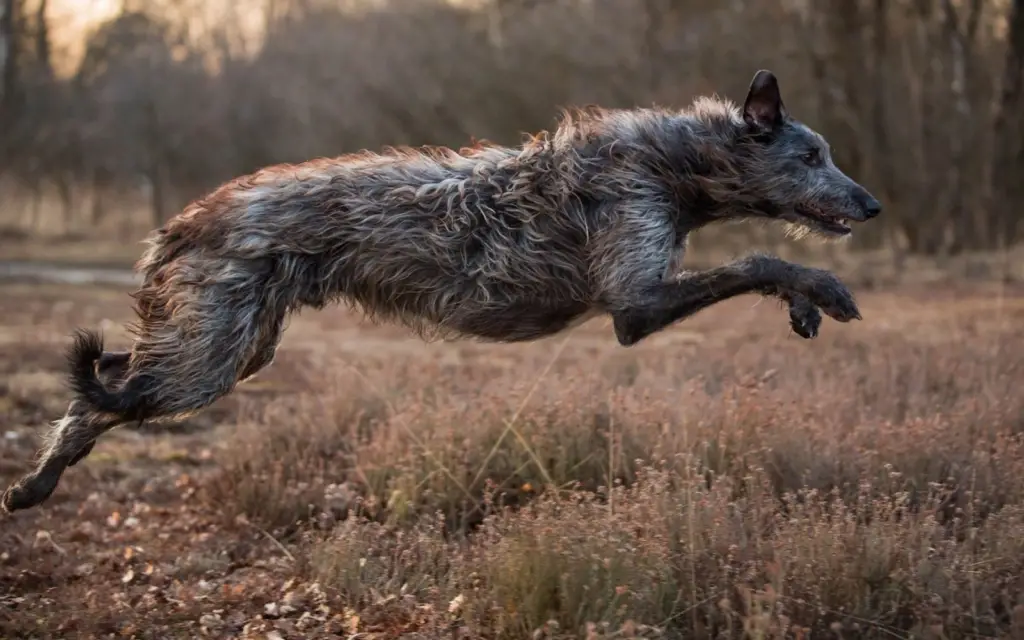
GoodFon
The Irish Wolfhound, another giant dog breed, has a life expectancy of only 6 to 8 years, which is quite short compared to many other breeds. Known for their towering height and majestic appearance, Irish Wolfhounds are impressive animals, but their size brings with it several health concerns. Due to their rapid growth and large frames, they are more prone to heart issues, including dilated cardiomyopathy, cancer, and musculoskeletal problems such as hip dysplasia. These health risks, combined with the strain their size places on their bodies, often lead to a shorter lifespan. Despite their brief time with us, Irish Wolfhounds are renowned for their gentle, loyal, and affectionate personalities. Their calm demeanor and deep bond with their families make them cherished companions, and the love they give during their shorter lives makes them unforgettable pets.
4. English Bulldog
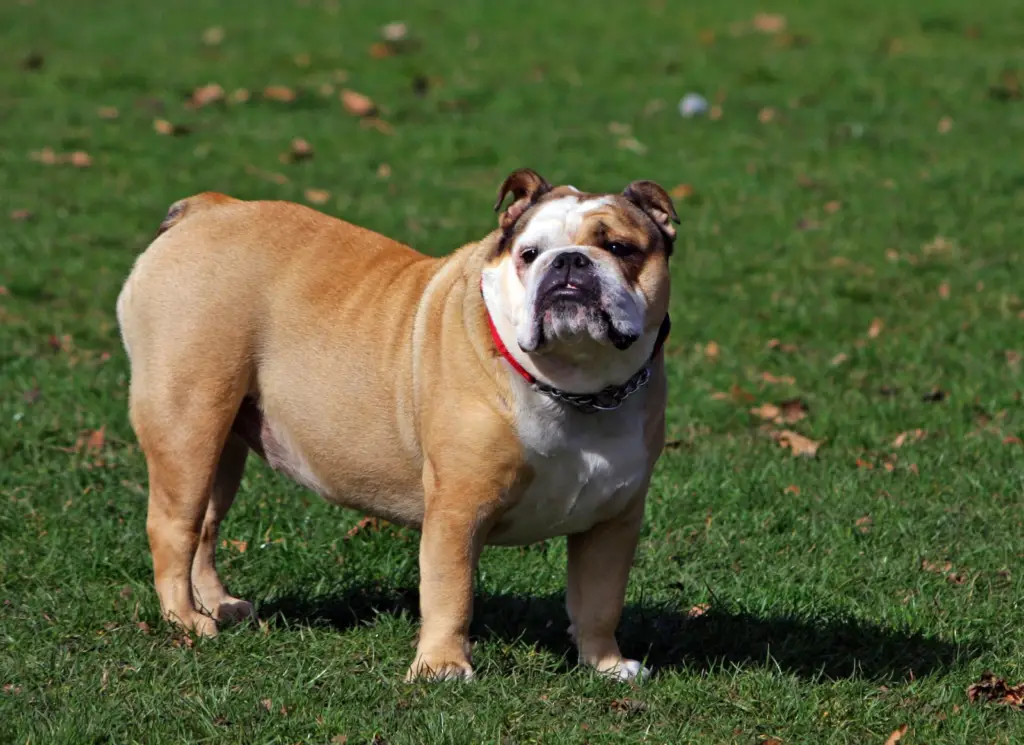
Wikimedia Commons
English Bulldogs have a lifespan of about 8 to 12 years, which is relatively short for a medium-sized breed. Their distinctive body structure, with short legs, a broad chest, and a flat face, makes them prone to several health issues. One of the most common problems they face is brachycephalic syndrome, a respiratory condition caused by their short snouts, which makes it difficult for them to breathe properly, especially in hot weather. Additionally, Bulldogs are susceptible to hip dysplasia, skin infections, and obesity, which can further impact their health and shorten their lifespan. Despite these challenges, English Bulldogs are incredibly affectionate and loyal companions. Their loving and playful nature makes them beloved pets, and their strong bond with their families adds a special dimension to their time together. Although their health problems may limit their years, their unique personalities make them cherished members of any household.
5. Boxer

Wikimedia Commons
Boxers typically live between 8 to 10 years, which is shorter than many other breeds of similar size. Known for their high energy, playful personalities, and strong bond with their families, Boxers are a favorite among active households. Unfortunately, their relatively short lifespan is often due to several health problems they are genetically predisposed to. Common health issues in Boxers include heart disease, particularly dilated cardiomyopathy, a condition that weakens the heart muscle, and cancer, which can affect their lifespan significantly. They are also prone to hip dysplasia, hypothyroidism, and other joint problems. These genetic conditions contribute to their shorter life expectancy, but despite the challenges, Boxers are incredibly affectionate and loyal companions. Their vibrant energy and devotion to their families make every moment spent with them special, and they continue to be a beloved breed for those who appreciate their loving and spirited nature.
6. Doberman Pinscher
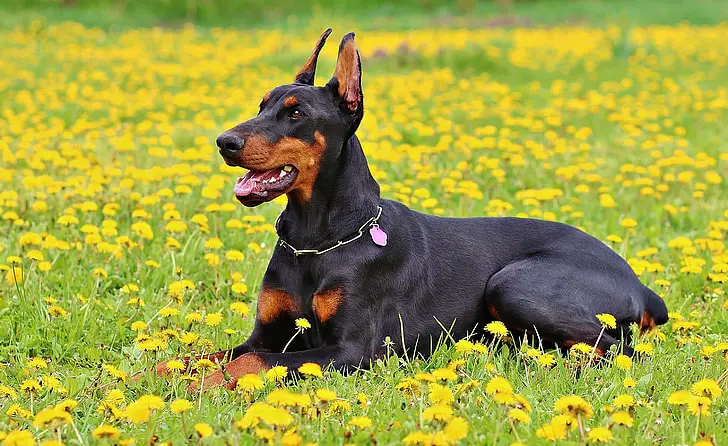
PickPik
The Doberman Pinscher, a breed renowned for its intelligence, loyalty, and strength, typically has a life expectancy of around 10 to 12 years. While their physical prowess and sharp minds make them excellent working dogs and loyal companions, they are unfortunately prone to several health problems that can shorten their lifespan. Dobermans are particularly susceptible to heart issues, such as dilated cardiomyopathy, a condition that weakens the heart muscle, as well as von Willebrand disease, a genetic disorder that affects blood clotting. They are also at risk for developing cancer and joint issues, all of which contribute to their relatively shorter life expectancy. Despite these health challenges, Dobermans are known for their affectionate, protective, and devoted nature, making their time with families all the more precious. Their loyalty and bond with their owners are what make their lives so meaningful, despite the health issues they face.
7. Rottweiler
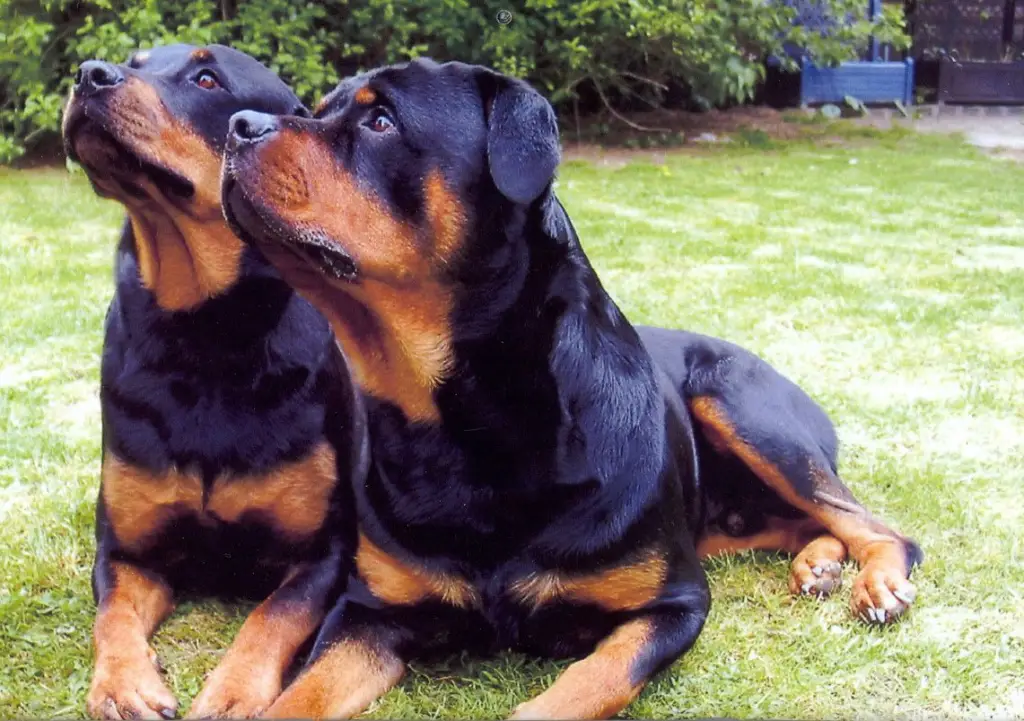
Wikimedia Commons
Rottweilers typically live between 8 to 10 years, which is relatively short for a dog of their size. Known for their strength, resilience, and protective nature, Rottweilers make excellent family pets and guard dogs. However, their larger size places significant strain on their joints, bones, and internal organs, making them more prone to various health problems. Common issues include hip dysplasia, a painful condition affecting the joints, heart disease, particularly dilated cardiomyopathy, and cancer, all of which can shorten their lifespan. The size and weight of Rottweilers contribute to these health challenges, which are more prominent as they age. Despite these potential health problems, Rottweilers are deeply loyal to their families and have strong protective instincts, making their bond with their owners especially meaningful. Their time with families, though shorter than some other breeds, is filled with love, affection, and unwavering devotion, making every moment precious.
8. Chow Chow
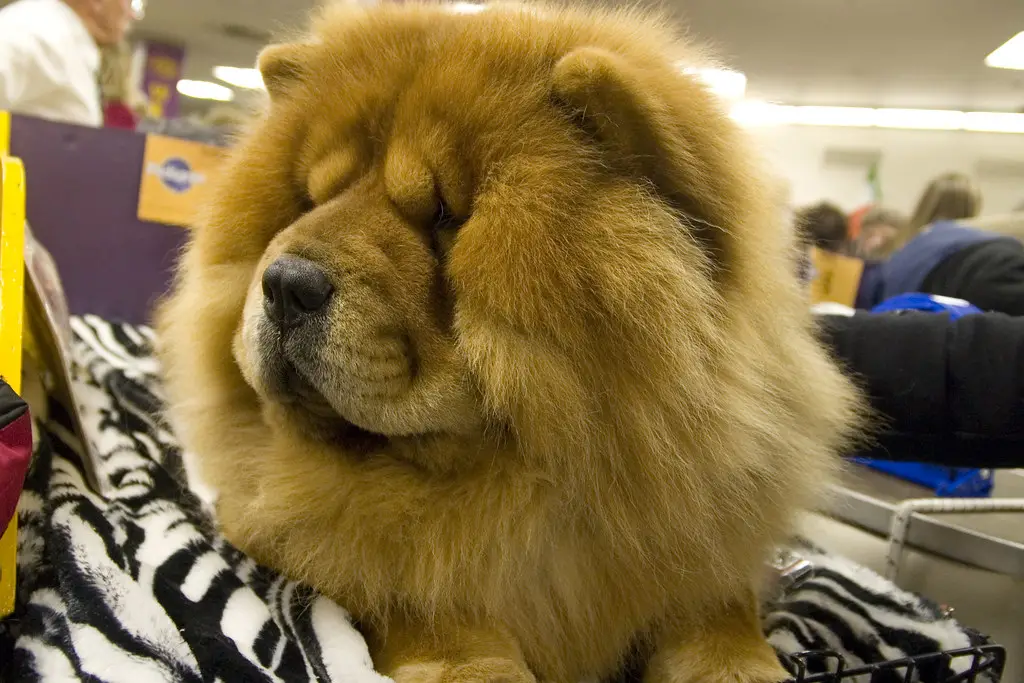
Flickr
Chow Chows, with their distinctive lion-like mane and independent personalities, typically live between 8 to 12 years. While they are beautiful and unique dogs, they are prone to a variety of health issues that can impact their lifespan. These issues include hip dysplasia, an inherited condition that affects the joints, autoimmune disorders, and eye problems such as entropion, where the eyelids roll inward, causing irritation. Chow Chows also have a tendency to become overweight, which can further strain their health and contribute to a shorter lifespan. Their independent and sometimes stubborn temperament can make them challenging to train, but this personality trait is part of what makes them so special. Despite their health challenges, Chow Chows are deeply loyal to their families and form strong bonds with their owners. Their affectionate nature and protective instincts make them cherished companions, and their time with their families, though potentially limited, is filled with deep love and devotion.
9. Mastiff

Flickr
Mastiffs, including breeds like the English Mastiff and Neapolitan Mastiff, generally have a life expectancy of 6 to 10 years, which is relatively short for a dog of their size. Known for their impressive stature and strength, these massive dogs are prone to several health issues that can affect their longevity. Common health concerns include hip dysplasia, a painful joint condition; heart disease, particularly dilated cardiomyopathy; and bloat, a life-threatening condition where the stomach twists and fills with gas. Their large size puts significant strain on their joints, heart, and internal organs, which contributes to a shorter lifespan. Despite these health challenges, Mastiffs are often referred to as “gentle giants.” Their calm demeanor, affectionate nature, and strong protective instincts make them beloved companions. Their deep bond with their families and their loyal, loving personalities make their time with their owners incredibly special, despite the health challenges they face.
10. Pug

Wikimedia Commons
Pugs are small but stocky dogs with a life expectancy of around 12 to 15 years, which is relatively long compared to many other breeds. However, their unique physical appearance—flat faces, bulging eyes, and a compact body—comes with several health challenges. One of the most common problems Pugs face is respiratory issues, particularly brachycephalic syndrome, which is a condition caused by their short snouts that makes breathing difficult, especially in hot weather. They are also prone to joint issues, eye problems like corneal ulcers or dry eye, and obesity, which can exacerbate other health concerns. These conditions can significantly affect their overall health and longevity. Additionally, Pugs tend to overheat quickly, making them more vulnerable to heatstroke in warmer climates. Despite these challenges, Pugs are adored for their affectionate, loving nature, and their ability to bring joy to their owners with their playful antics. Their charming personalities make them beloved companions, and their time with families, though often marked by health issues, is filled with warmth and laughter.
11. Great Dane

Wikimedia Commons
Great Danes are one of the largest dog breeds, and unfortunately, their size is directly linked to a shorter lifespan. On average, these gentle giants live between 6 to 8 years, which is considerably less than many smaller breeds. Due to their massive size, Great Danes are more prone to serious health issues such as heart disease, particularly dilated cardiomyopathy, where the heart becomes enlarged and weak. They are also susceptible to joint problems, including hip dysplasia, and are at high risk for bloat, a life-threatening condition where the stomach fills with gas and twists. These health concerns can be difficult to manage, requiring frequent veterinary care, and contribute to their relatively short life expectancy. Despite their health challenges, Great Danes are known for their loving, affectionate, and loyal nature, making them cherished companions, even if their time with us is often shorter than we’d like.
12. Saint Bernard

Shutterstock
Saint Bernards, known for their immense size and friendly disposition, have a life expectancy of just 8 to 10 years, which is relatively short compared to many other dog breeds. Their large size, while part of their majestic charm, places significant strain on their hearts, joints, and bones, making them more susceptible to health problems. Common conditions that affect Saint Bernards include hip dysplasia, where the hip joint doesn’t develop properly, heart disease, and bloat, a life-threatening condition where the stomach twists and fills with gas. These issues often contribute to their shorter lifespan, requiring diligent care and regular vet visits. Despite their health challenges, Saint Bernards are cherished family pets because of their calm, gentle, and affectionate nature. Their loving temperament, especially around children, makes them wonderful companions, and their ability to form deep bonds with their families ensures that their time, although brief, is filled with joy and affection.


